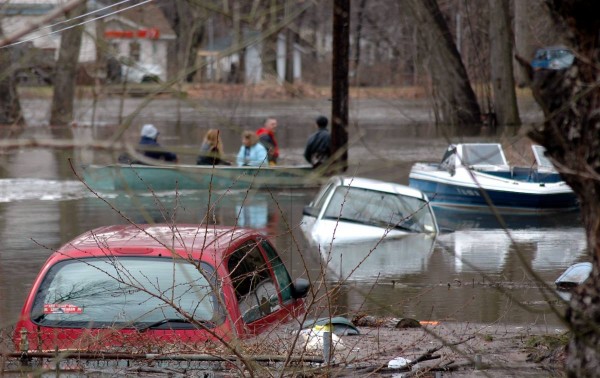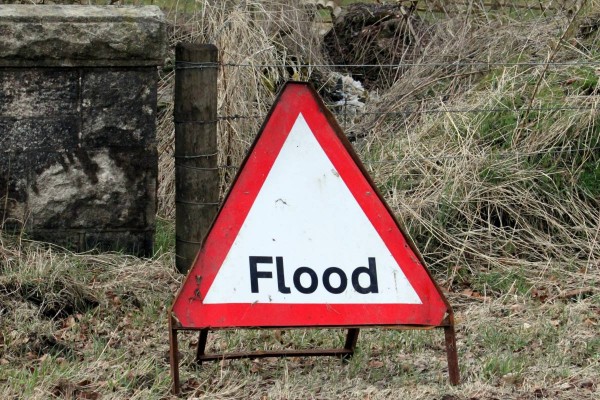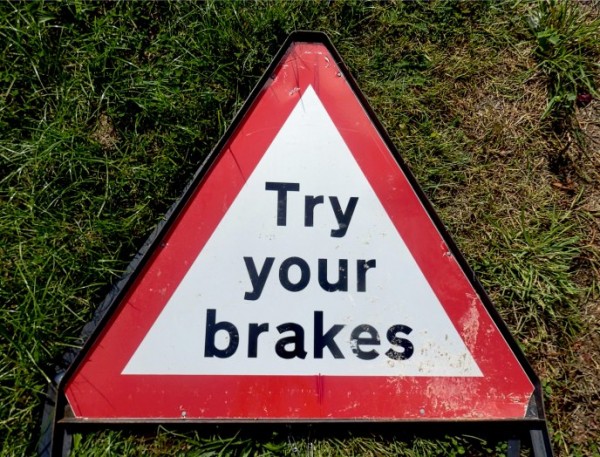
Floods frequently occur in the UK, sometimes localised and sometimes over large areas. Sometimes flooding is difficult to see (particularly at night), or you might just think that you’re driving into a shallow puddle, but it suddenly becomes deep.
In some situations you might leave your vehicle and come back to find it swamped – there’s not much you can do in this case.
What happens when you drive into a flood or deep water?
If you are travelling at speed, as the water gets deeper, the tyres will first start to aquaplane (ride up over the top of the water), but quickly will sink in and the underside of the car will cause massive drag, slowing you down. If this happens on one side of your vehicle, e.g. only two of your wheels run through the deep water, your vehicle will be pulled in that direction.
The speed can force water into the engine where it could short out the electrical system and, if it gets into the cylinders, will bend or break a con rod because water doesn’t compress like air does.
How deep is too deep?
For normal cars, 5 inches (13cm) is the maximum you should attempt to navigate. At 6 inches, water will be lapping at the bottom of the doors on most passenger cars. Once the water reaches a foot deep, many cars will start to float, which reduces the grip of the tyres. Fast flowing water can move a light car quite easily at one foot deep.
At two feet deep (60 cm) most cars will be swept away if the water is moving. Open vehicles will have more grip.
If you have a snorkel (an elevated air intake) then you can attempt deeper water, but as this video shows, you have very little control because the air in the car keeps it bouyant.
How to cross a flooded section of road
Sometimes flooded sections will be marked with a sign:

Or you might see a ford sign where a stream crosses the road. Streams can quickly become much more rapid and deeper if there’s heavy rain further up the catchment area.

It’s preferable to watch another vehicle do the crossing before you attempt it yourself and note how deep the water is to make sure that it will be possible to get your vehicle through.
If there are no other vehicles around you can walk through the flood with a stick to measure the depth. If the water is moving fast, do not enter it as it could sweep you away. As little as a foot of water can take your feet from under you.
In some cases the flood will wash the road away – do you know that there’s road there?
Once you are sure that you can make it through the deep water approach it at a slow speed – 2-3mph – keeping the revs high so that water can’t flow up the exhaust pipe.
Maintain a consistent speed. This will mean you will need to give the vehicle more power to overcome the water resistance. Try not to get bogged down as it could be more difficult to get moving again.
Roads are always higher in the middle, sometimes by up to 10cm which can make a lot of difference, so drive along the middle of the road to make the water effectively less deep.
Let only one vehicle through at a time. If you break down then another vehicle can help tow you out, but if you stop and another vehicle is right behind you it might be impossible for it to reverse out.
After you’ve driven through deep water, test your brakes and make sure they are working again. You might need to drive along a little way with your brakes applied to dry them off.

